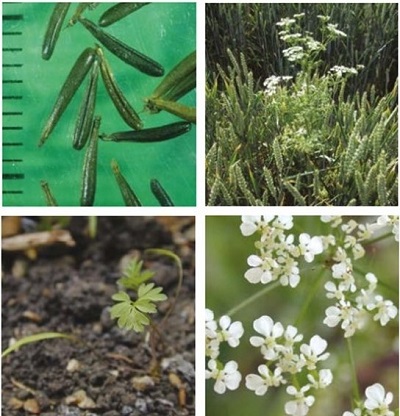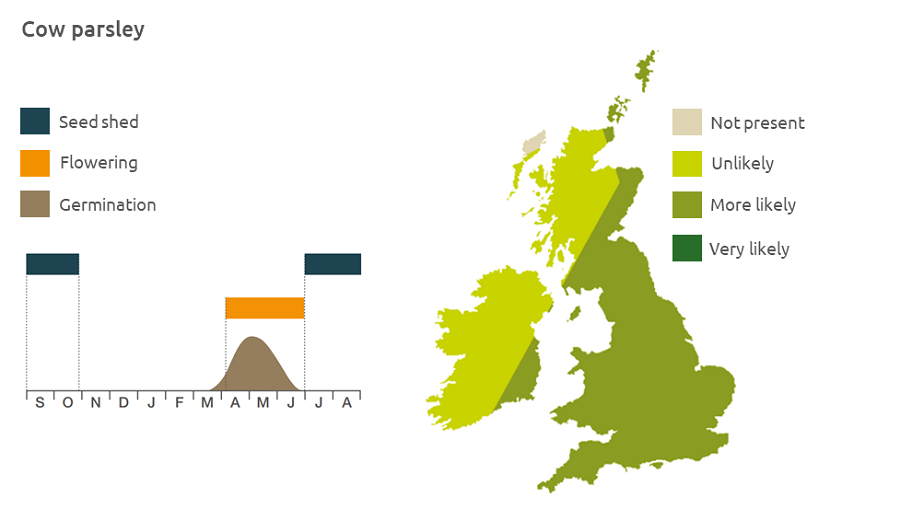- Home
- Knowledge library
- Distribution and biology of cow parsley in the UK
Distribution and biology of cow parsley in the UK
Cow parsley is a broad-leaved weed that can spread into crop headlands from hedgerows. Find out how to identify and control it.
Overview
Cow parsley (Anthriscus sylvestris) spreads into crop headlands from hedgerows. It is usually found as a seedling in cereal crops. The seeds require chilling to germinate and the seedlings grow slowly. Mature plants can overwinter forming new leaves in the spring; these die off as the flowering stem grows. The plant can also regenerate from the buds in the axils of the basal leaves.
- It has value to biodiversity
Description
It is a robust perennial dicotyledon, 40–150 cm tall, with upright branched hollow stems. The leaves are divided two to three times giving a feathery appearance. Small white flowers cluster in a dense umbrella-shaped head up to 6cm across.
Key features
Plant: It has hollow furrowed unspotted stems, sometimes purplish in colour, and triangular grooved leaf stems.
Flowers: Cow parsley is the first umbellifer to flower.
Lookalikes
Cow parsley may be confused with shepard's-needle or other similar umbellifers when young: The leaflets are coarser and less divided than shepard's-needle, and the cotyledons longer and thinner than fool’s parsley.

Location and life cycle

Geographic distribution
Cow parsley grows throughout Britain in hedgerows, verges, meadows and river banks.
Soil type
It is found most frequently on alkaline soils. It does not like very wet or very dry conditions.
Seed statistics
- Seed longevity: 1–5 years
- Seed weight: 3.33 mg
- Seeds/floret: 2
- Seeds/plant: 100–1,000
Management
Spread may be reduced by ploughing and probably moderate cultivation.
For advice on herbicides, please speak with your agronomist or adviser.
When was this information last updated?
This page is based on content from the encyclopaedia of arable weeds publication. Since it was first released in 2008, the publication has been redesigned several times but not revised. However, it remains a good foundation for general information on the distribution and biology of weeds.

